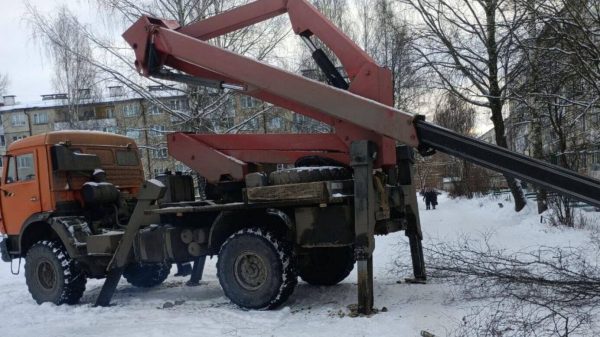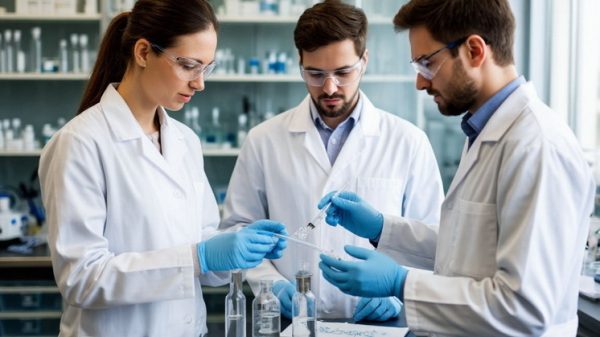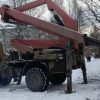
Sweden's HYBRIT plant
It’s December and less than 100 miles from the Arctic circle. But while Svartön (“black island”) – the heavily industrialised peninsular around HYBRIT, Sweden’s pilot fossil-free steel plant – is already dusted by a thin layer of snow, the estuary around it has yet to freeze.
To see why the first steps towards fossil-free steel are happening here, in the Sweden’s icy north, you have to look across the grey waters to the Bergnäsbron bridge where the mighty Lule river spills into the Baltic Sea.
Along its way from the mountains of Lapland, this river generates more power than any other in Sweden, close to 15 terawatt hours last year. That is more than a tenth of Sweden’s domestic consumption and, coincidentally, the amount of power that Swedish steel company SSAB estimates it needs to completely replace coal in its mills.
When Swedish Prime Minister Stefen Löfven, himself a former metalworker, opened the plant in August, he described it as “the biggest technological shift in steelmaking in 1,000 years”.
“Steel has built Sweden, and steel has built our welfare state,” he declared, the plant’s silvery-grey tower visible behind him. “But steel – or rather the manufacture of steel – also threatens our way of life.”
The iron and steel industry paid for the establishment of the county’s social democratic state, particularly during the Second World War, when, to the frustration of Winston Churchill, ships left the docks where Luleå’s icebreakers now sit waiting for the harbour to freeze, delivering iron ore to Nazi Germany.
But the industry also contributes more than 10pc of Sweden’s carbon emissions, which is why during the preparations for the Paris climate conference five years ago this month, the steel company SSAB concluded that stop-gap options like carbon capture would never be enough.
How carbon capture and storage works
“We needed to take a significant step,” Martin Pei, SSAB’s chief technology officer, remembers. “We couldn’t continue our current process, because then Sweden would have no chance of reaching its ambitions.”
Moreover, with its surplus of cheap, fossil-free energy, iron ore reserves and steelmaking know-how, Pei realised Sweden was uniquely well-positioned. “Sweden could lead this technology shift and show the rest of the world that it is possible to do it on a commercial scale.”
In 2016, the steel company, along with iron ore miner LKAB and power company Vattenfall – both controlled by the state –announced HYBRIT (Hydrogen Breakthrough Ironmaking Technology). The initiative aims to remove carbon emissions from every stage of the iron and steel-making process, starting at LKAB’s iron ore mines in the mountains of Lapland.

Lapland will be the first area in which Sweden aims to remove carbon from steel production
Credit: Mats Lindberg/Getty Images
“There is no other project in the world at the moment which is this ambitious,” says Johan Martinsson, a researcher at the Swerim metals research institute.
The pilot plant will take water from the Lule river, electrolyse it and use the hydrogen produced to react with the oxygen in iron ore to create Direct Reduced Iron (DRI), or sponge iron.
Right now the plant is being run on natural gas during testing, but when it switches to hydrogen next spring, it will produce the world’s first fossil-free sponge iron, some of which will be turned into fossil-free steel at Swerim’s nearby electric arc furnace.
It won’t be until 2026, though, that the first fossil-free steel from SSAB’s industrial-scale demonstration plant hits the market, and not until 2040 that the final lump of coal is burnt at the Luleå steel mill behind the pilot plant.
“We are aware that the climate can’t wait. But we can’t go faster,” Pei says. “This is already an extremely short time compared with earlier technical breakthroughs in the steel industry. You can almost compare it with the development of the Covid-19 vaccine.”
The next stage, a demonstration plant capable of making more than 1m tonnes of sponge iron a year, will be built either here in Luleå (although the Swedish Armed Forces have objected), or 60 miles north of the Arctic circle at LKAB’s iron ore mining complex at Malmberget.
Malmberget is where the iron ore rush began in Sweden back in 1888, after inner Lapland was linked to Luleå by rail, beginning a century of rapid growth that transformed Sweden from one of Europe’s poorest countries to one of its richest.

A summer evening in the city of Lulea in Norrbotten, Sweden.
Credit: Marcus Lindstrom/iStockPhoto
Mox Murugun, the Australian investment manager at the regional development agency in Luleå, argues that the country is on the edge of a similar green industrial boom.
“Through quirks of geography, we ended up providing 90pc of Europe’s iron ore, and in the same way, if you look at renewable electricity and water, we have what a lot of Europe doesn’t.
“Right now we’re seeing a number of energy-intensive industries that are thinking of relocating here, because planning forward they think, ‘we need renewable electricity and we need lots of it’. And here the electricity is available at Europe’s lowest prices. It’s compelling.”
HYBRIT’s demonstration plant, for which an investment decision is due in 2022, will require 400MW of power just for the electrolysers to make the hydrogen. Sweden’s largest existing wind farm, Björkhöjden, produces just 288MW. Then to store the hydrogen, Vattenfall plans to build 120,000 m3 of lined underground storage, enough to store 100GWh worth of the gas.
The HYBRIT consortium is building a 100m cubic metre test storage facility in Luleå next year. “If you put it in comparison, it’s something like a million Tesla cars,” Mikael Nordlander, the company’s head of industry decarbonisation R&D, says of the gas this could keep in reserve.
“But if you look at a steel plant the size of what SSAB has in Luleå today, this storage could supply it with hydrogen for about four to five days.” LKAB at the start of last month produced the world’s first iron ore pellets produced with bio-oil as its part of the HYBRIT pilot stage.

Lulea will host a 100m cubic test storage facility next year
Credit: Divepic/iSTockphoto
But its ambitions are, if anything, greater than SSAB’s. In late November it announced a plan to invest 400bn kroner (£35bn) over the next 20 years to gradually switch its entire production from iron ore pellets to hydrogen-reduced sponge iron.
“This is the biggest transformation in the company’s 130-year history and could end up being the largest industrial investment ever made in Sweden,” says Jan Mostrom, the company’s chief executive.
Markus Petäjäniemi, its market and technology director, estimates that shifting to sponge iron could prevent LKAB’s customers from releasing 35m tonnes of carbon dioxide emissions a year (about 10m tonnes of which would be saved by SSAB). That is 50 times the emissions LKAB produces from its own operations, and just short of Sweden’s current total carbon emissions of 45m tonnes.
“If you look at it with really open eyes, what we are doing today is exporting oxygen bound up in our iron ore, and it is the oxygen that is the problem when it comes to the steel industry, because you have to use coal to get rid of it, and that creates CO2,” he explains.
If LKAB began exporting sponge iron instead, steel producers in Europe and elsewhere would be able to make fossil-free steel simply by switching to the electric arc furnaces already used to make steel from scrap. To do this, though, will require about a third of the 160 terawatt hours of electricity Sweden currently produces.
Uk electricity sources
Nordlander argues that from a planning permit perspective, the amount of power this might require is less of a problem than building the grid to carry it. Sweden already exports about 25 terawatt hours of surplus electricity a year, and is scheduled to increase its wind power production nearly five-fold over the next 20 years to 90 terawatt hours. The potential for northern Sweden is many times that.
“It’s a rural area with a very low population density, so there is a lot of expansion that could be done,” Nordlander says. “Germany, which has ten times Sweden’s population density, is already at 125 terawatt hours of wind power per year.”
If Sweden stops exporting green electricity to Poland, Lithuania, Finland and Denmark, he insists, that will not mean it will have less of an impact on reducing Europe’s carbon emissions.
Instead, on the tip of the Svartön peninsular, the twin ports operated by SSAB and LKAB will be exporting wind and hydropower bound up in sponge iron and steel.



















































Свежие комментарии